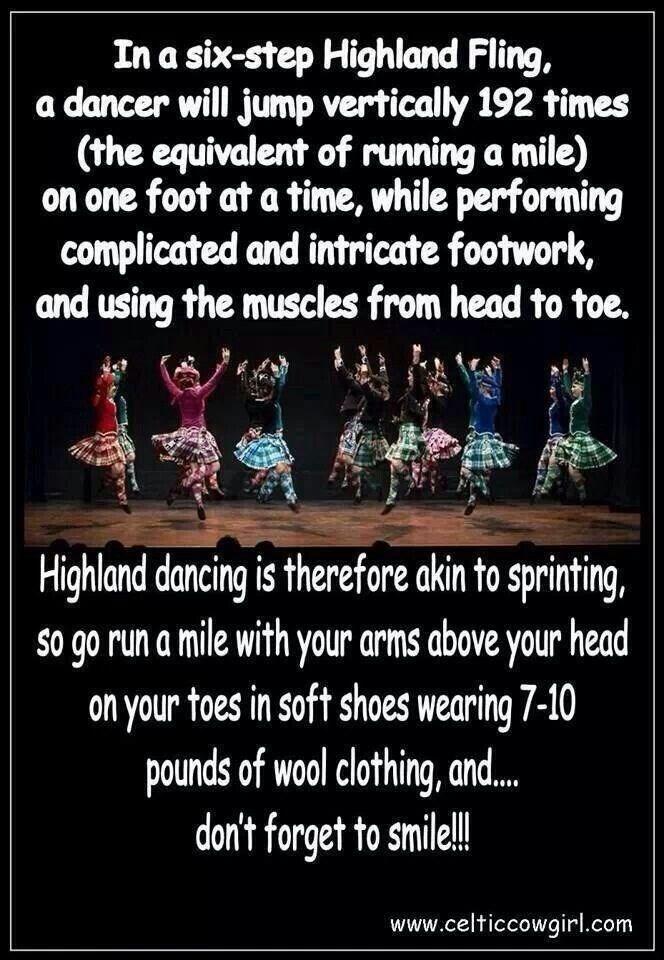
4 minute read
Evelien Explains: Scottish Highland Dancing
Scottish Highland Dancing, what would be the first questions popping into your mind? Oh, that is like Irish dancing isn’t it? Like Michael Flatley right? Or do you just go blank because you actually have no idea? Highland Dancing is a traditional type of dance during which most often one jumps on the ball of the foot of one leg, whilst performing very precise actions with the other leg/ foot. The arms are also allowed to be used contrary to Irish dancing. All the steps are set, and improv is a no go. In addition, Highland Dancing was heavily influenced by ballet a couple of centuries ago when England and France had a lot of interaction. Oh, and most importantly, the dances are performed on the lovely sound of the bagpipes. I guess forming an image of the style of dance is still hard to picture, so maybe do a quick google search if you want a clearer image ;). As Highland dancing is a traditional form of dance, its history is important and therefore you will be questioned on it during exams...
The History
Advertisement
I am almost certain that the phrase ‘dance is for girls’ is not unknown to you. Regarding the fact that dance is a great activity for everyone to participate in, Highland dancing is well-known because it is a male sport in origin. The kilt outfit is originally a male outfit and females were not allowed to wear the outfit or do the dances. And this is what those men did in their kilts:
One of the most known stories from Highland dance revolves around the sword dance. The sword dance came to be due to a won battle by the Scottish who danced over their sword and the sword of the opponent (probably the English) to show their strength. Later in the military, all the soldiers would do this dance at the same time, whilst the music started speeding up. When you accidentally touched your sword, you lost the game. The last man standing could enjoy his victory enjoying the local delicacies. Here it would be the amazing taste of ‘droge worst’ where in Scotland I can only imagine whiskey as the price. This is only a tiny piece of the history of Highland dancing, but as every dance and every piece of clothing has a history, it's important to know the basics.
Competing and World Championships
Knowing the basics of the dance’s history and the dance itself, just like in any other sport, you eventually enter into the world of competing. Starting at a ´normal´ competition, in which you can pick and choose your steps of preference, you slowly start dancing your way through the different levels. Some have a time limit, and for others you just need to win to collect stamps to follow through to the next level. Once you reached premier, the highest level within the competition system, it is expected of you to do more difficult steps to gain more points to call yourself the winner of the day. Next, collecting points from your wins, you can start competing in pre-championships and championships. It all sounds nice and easy, however, often highly competing dancers ‘retire’ around the age of 20 and then move on to teaching or shows. Being a championship dancer it is most common to start dancing before the age of 5. From a young age, the dancers are often competing twice a week, performing six to eight dances a day. Every other day is spent on their toes doing dance practice, core training, flexibility training, and more. You need to be able to control every inch of your body.
From the tip of your toe, to the tip of the finger of the arm you're holding up in the air, and don’t forget to keep smiling all the way through. However, after smiling through the pain, having the most points does not make you a world champion. There is a different event. The Highland Dancing World Championships are annually held in Cowal in August. This is THE event to dance at. Cowal is a multipleday competition with several rounds that will get you up to the last day, to then dance the best you can to receive the title of world champion. The steps are chosen and published months in advance so everyone can focus their training on those specific movements, and it is also a way to assure that everyone is doing the exact same version of the dance. Imagine the extra work you have to put in if you usually do not perform those steps… Luckily, dancing has more to it than just the competing side: Highland
dancing can bring you places. Around the age of 16 you are old enough to start joining international dance trips. If you apply for a team and get on, you can be assured that the team is a big group of international dancers and join the tattoo family (tattoo = a performance where different bands come together and play their show and at the end they all play a couple of tunes together).

The world of Highland Dancing, and of course any other type of dance, is a community in and of itself, made up of like-minded people. Traveling, working out, a second family: three things of which we can enjoy only one in the current environment. However, that doesn’t hold anyone back. The next time everyone comes together to compete or perform will be even better than before, just like our next social in the Doos!








